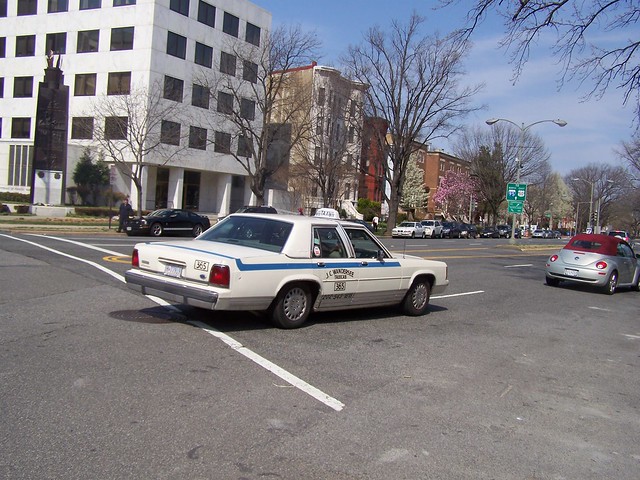One point about taxi drivers who don't own their own vehicles: the regulatory system isn't set up to protect them

In the previous blog entry I wrote:
The regulatory system should provide:
for taxi operators
- a testing regime for drivers
- an application and monitoring service over the companies and individuals licensed to offer taxi services
- a system of inspection for vehicles and general operations
for customers
- a system to handle and rectify customer complaints
in general
- a set of customer service standards and metrics
- a benchmarking-research function to ensure that DC taxi services are best-in-class (cf. "Pr. George's cabbies complain about pick-ups at Gaylord National," Post, about how National Harbor is offering its own taxi service because they claim that PG County taxis are substandard)
- a system for ensuring vehicle and service quality (inspections, inspectors, including operation at all times of day and days of the week)
- a system for being able to innovate and offer new services (also see the recent blog entry "Testing changes to zoning with demonstration projects").
2. This framework leaves out the taxi drivers who aren't owner-operators. Who protects them? No one really.
3. That's what I was referring to when I made the point in other writings that because a preponderance of drivers come from demographics with fewer opportunities, there may not be "barriers to their entry" to the occupation (other than passing the drivers test), but the oversupply of interested drivers because of factors exogenous to the industry means that the workplace isn't very stable or supportive, and it can be hard to make a living, especially if the taxicab operators who are licensed charge drivers a lot of money to operate ("rent") a cab.
4. It only gets worse with "ridesharing" services being added to the mix, because the providers in those cases again have different, non-industry related factors influencing their decision making and how they account for the cost of providing the service.
This expands the supply of vehicles without necessarily increasing demand (it probably does lead to a demand increase somewhat). Further pressuring the traditional taxi industry.
5. I mention this because the economic stability of the taxi industry is in part at risk in more marginal markets, as a result of ridesharing services.
It "feels" comparable to me to how traditional commercial districts declined in response to the creation of suburban shopping centers and the chaining up of retail sectors.
With fewer tenants seeking space in TCDs, landowers would rent to anyone, rents went way down, usually below the amount necessarily to properly maintain the building(s), so the district declined further and further, because at the microeconomic level, its fundamentals were broken.
The same goes for taxi services.
Labels: government oversight, microeconomics, regulation, taxi and jitney services, taxi services, transportation planning



1 Comments:
great point, very similiar dynamic.
Like Richard Branson, there is a lot of money to come in to a public service, dress it up a bit, and clean up.
other than london, I can't think of a city where people are happy with the cab service. The fact they are all immigrants makes it easy to hate them.
Post a Comment
<< Home